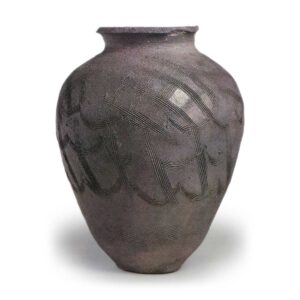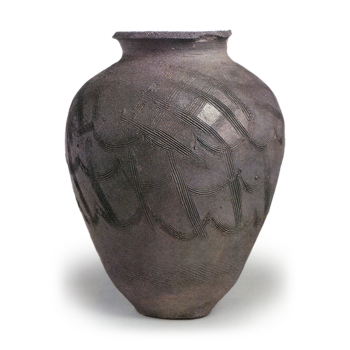
14th century
Height 33.7 cm, mouth diameter 13.4 cm, body diameter 25.6 cm, bottom diameter 8.5 cm
Honda Collection
The technique used in Suzu ware, with the exception of a few floral motifs, is limited to comb patterns, but it is rare to find a jar that makes full use of comb patterns as much as this one. A large comb-shaped wavy pattern is drawn on the central part of the body, and then a vertical comb pattern is drawn on the top of the wavy pattern. The shoulder is decorated with a diagonal latticework of comb patterns. The clay is relatively dense and of high quality, and the firing is tight with a faint yellowish green natural glaze covering a part of the shoulder. The bottom of the vessel was formed first, and then the top was jointed by cord making, and after forming by beating with coarse knurling, the beaten patterns were removed by shaving to adjust the vessel surface. Remnants of this process can be seen on the lower half of the body. It is said that this method was generally used for the shaping of decorated vases. This is one of the representative works of the late Kamakura period.



